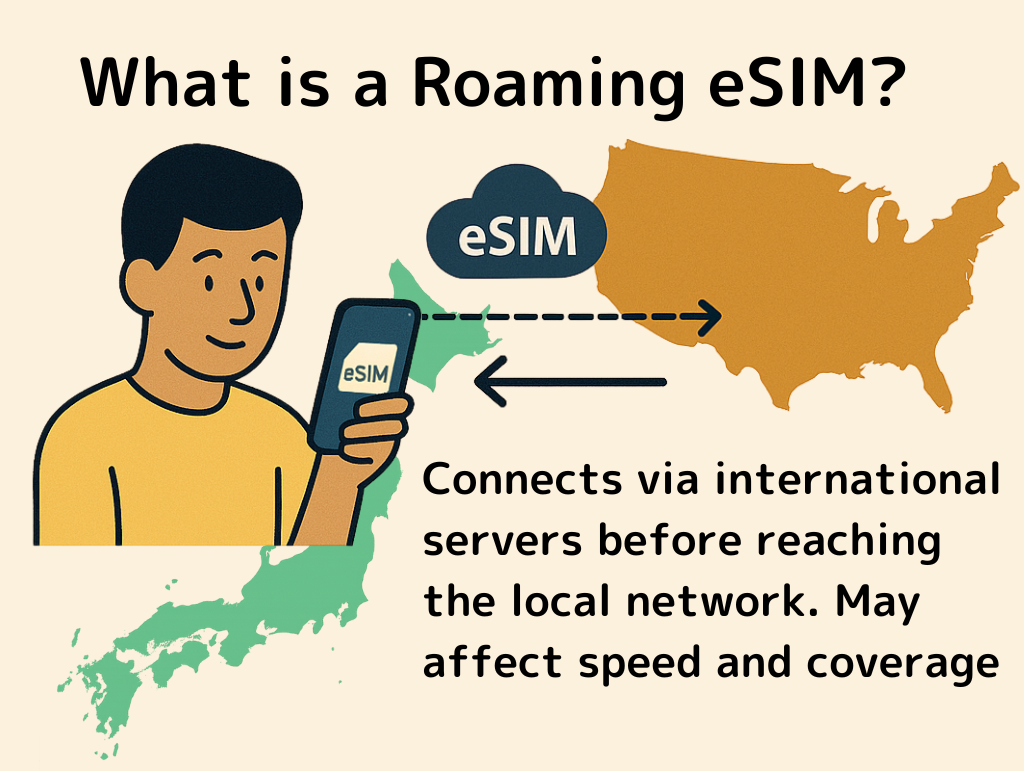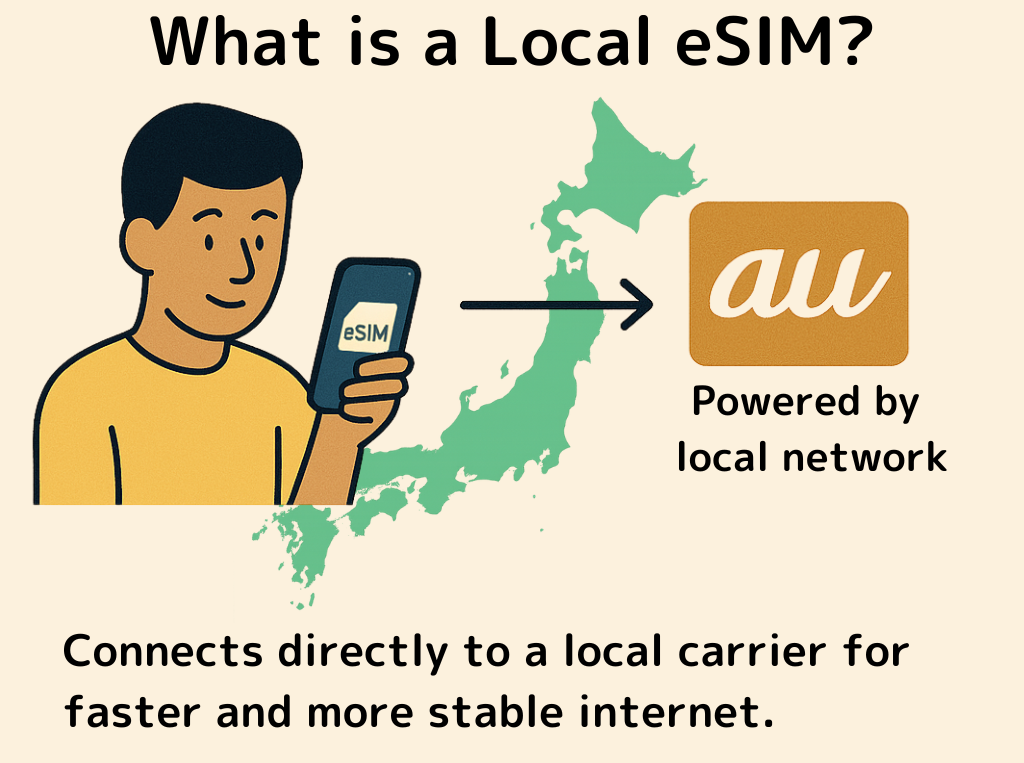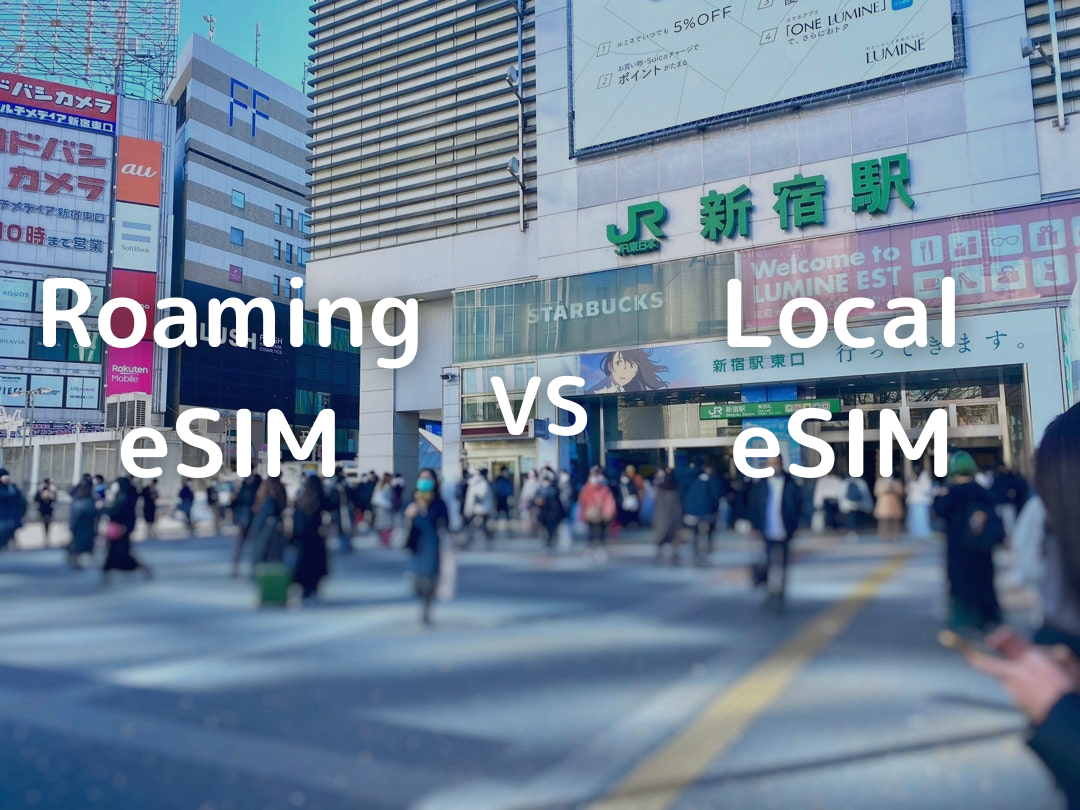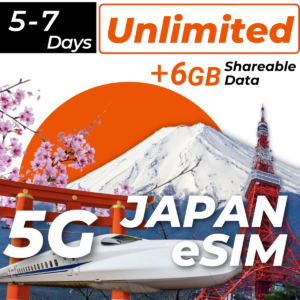Did you know that there are two types of travel eSIMs—and that the one you choose can greatly affect your data speeds, costs, and overall connectivity experience?
If you’re planning to use an eSIM on your next trip abroad, it’s important to understand the difference between a Roaming eSIM and a Local eSIM. Many travelers aren’t aware of this, but making the right choice can save you money, give you better internet speeds, and help you avoid common connection issues.
Let’s break it down in simple terms.
What Is a Roaming eSIM?

A Roaming eSIM connects to the internet through your eSIM provider’s global network, which then uses partner networks in your destination country. It’s similar to international roaming, but through a digital eSIM service.
These are commonly offered by global platforms like Airalo, Holafly, or Nomad.
Find out which eSIM is better for your trip to Japan — Airalo or Best eSIM Japan.
- ✅ Works in multiple countries with just one eSIM
- ✅ Easy to install before your trip
- ❗ Often more expensive than local options
- ❗ May have slower speeds due to data routing
- ❗ Sometimes limited local network support
What Is a Local eSIM?

A Local eSIM is provided by a mobile carrier based in the country you’re visiting. For example, in Japan, you might use a local eSIM powered by a carrier like AU (KDDI).
- ✅ Faster speeds and more stable connection using local networks
- ✅ Typically more affordable than roaming eSIMs
- ✅ Optimized for travelers staying in one country
- ❗ Only works in one country
- ❗ Some may require local purchase (though many now support pre-trip activation)
Don’t Forget: Data Limits Matter!
One of the most important (but often overlooked) points when choosing an eSIM is how much data you actually get.
Even if a plan says “Unlimited Data,” it doesn’t always mean what you think.
- 📊 Daily high-speed limits – Some “unlimited” plans reduce your speed after 1GB or 2GB of use per day.
- ⚖️ Fair Usage Policy (FUP) – Your speed might be throttled if you use too much data too quickly.
- 💸 Extra charges – Running out of data? Top-ups can be pricey.
Pro Tip: Check the plan details carefully. Look for terms like “high-speed data,” “soft cap,” or “throttling” so you know exactly what to expect.
Roaming eSIM vs Local eSIM: Quick Comparison
| Feature | Roaming eSIM | Local eSIM |
|---|---|---|
| Coverage | Multiple countries | One country only |
| Speed & Performance | May be slower | Usually faster |
| Price | Generally higher | More affordable |
| Data Limits | Often limited or throttled | Usually more generous |
| Ideal For | Multi-country travelers | Travelers staying in one country |
Which One Should You Choose?
Here’s a quick guide to help you decide:
- ✈️ Going to multiple countries?
→ A Roaming eSIM offers convenience across borders. - 🗾 Staying in one country (like Japan)?
→ A Local eSIM provides better speed and value.
For example, if you’re visiting Japan, a local option like Best eSIM Japan gives you access to the high-speed AU network with great 4G/5G coverage across the country and competitive local pricing—perfect for tourists.
Final Thoughts
Picking the right eSIM can seriously improve your travel experience. Think about where you’re going, how long you’ll stay, and how much data you’ll need.
Remember: not all “unlimited” plans are truly unlimited, and not all eSIMs are created equal. A little research now can go a long way in helping you stay connected, without surprises.
👉 If you’re looking for a reliable local eSIM in Japan, check out







